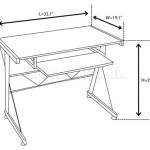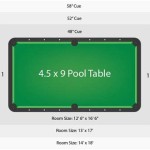8 Person Round Table Seating Chart Templates: A Comprehensive Guide
Round table discussions are a common feature of conferences, meetings, and collaborative workshops. Their circular configuration fosters a sense of equality and encourages open communication among participants. However, effectively managing these discussions requires careful planning, and a crucial element of this planning is the seating arrangement. A well-designed seating chart can significantly impact the dynamics of the conversation, ensuring balanced participation and promoting a productive atmosphere. This article explores the importance of seating arrangements at an 8-person round table, examines factors to consider when creating a template, and provides practical guidance for utilizing these templates to achieve optimal outcomes.
Creating a seating chart for an 8-person round table involves more than simply assigning seats randomly. It requires considering the relationships between participants, their individual personalities, and the overall objectives of the meeting. A strategic seating plan can mitigate potential conflicts, facilitate knowledge sharing, and encourage quieter individuals to contribute more actively. Conversely, a poorly planned seating arrangement can lead to dominance by certain individuals, exclusion of others, and a less productive discussion overall.
Templates offer a structured framework for designing seating charts, saving time and ensuring that key considerations are addressed. These templates can be customized to suit specific meeting requirements and participant profiles. By utilizing a template, meeting organizers can ensure a fair and balanced distribution of participants around the table, maximizing the potential for meaningful interaction and collaborative problem-solving.
Key Considerations for Designing an 8-Person Round Table Seating Chart Template
Several factors should be considered when designing an 8-person round table seating chart template. These considerations relate to participant dynamics, meeting objectives, and practical constraints.
1. Identifying Participant Roles and Relationships: Before assigning seats, it is essential to identify the roles of each participant and understand their existing relationships. Are there individuals who work closely together? Are there potential conflicts or disagreements that need to be managed? Are there senior figures or key decision-makers whose placement requires special attention? Understanding these dynamics allows for a strategic distribution of participants, promoting collaboration and mitigating potential disruptions. For example, placing individuals with opposing viewpoints diagonally across from each other can encourage a more balanced and considered discussion. Similarly, strategically positioning a facilitator or moderator can help to manage the flow of conversation and ensure that all voices are heard.
Furthermore, consider the expertise of each participant. Are there subject matter experts who can provide valuable insights on specific topics? If so, ensure they are placed in a position where they can easily contribute to the discussion. This might involve placing them near individuals who are likely to ask questions or seek clarification on their area of expertise. Understanding the relational dynamics and expertise distribution forms the very foundation of a good seating chart.
2. Balancing Personality Types and Communication Styles: Another crucial consideration is the diversity of personality types and communication styles among the participants. Some individuals may be naturally assertive and dominant in discussions, while others may be more reserved and hesitant to speak up. A well-designed seating chart should aim to balance these different communication styles, ensuring that everyone has an opportunity to contribute. This might involve strategically placing quieter individuals next to more supportive or encouraging participants. It is important to avoid clustering dominant personalities together, as this can lead to one-sided conversations and the exclusion of other voices. The goal is to create an environment where all participants feel comfortable sharing their ideas and perspectives.
Consider also the potential for language barriers or cultural differences. If there are participants who are not native speakers of the meeting language, it may be helpful to place them near individuals who are patient and understanding. Similarly, be mindful of cultural norms regarding communication styles, such as directness or indirectness. A seating chart that takes these factors into account can help to create a more inclusive and welcoming environment for all participants.
3. Aligning Seating with Meeting Objectives: The objectives of the meeting should also inform the seating arrangement. If the goal is to generate new ideas through brainstorming, a morerandomized seating arrangement may be appropriate, encouraging participants to interact with individuals they may not typically work with. If the goal is to reach a consensus on a specific decision, it may be more effective to group individuals with similar viewpoints together, fostering a sense of collaboration and shared understanding. If the goal is to facilitate knowledge sharing, consider placing experienced individuals next to newcomers, creating opportunities for mentorship and knowledge transfer.
Consider, too, the need for visual aids or presentations. Ensure that all participants have a clear view of the screen or presentation area. Avoid placing participants in positions where they may be distracted by noise or movement. The physical environment should be conducive to focused discussion and engagement.
Creating and Utilizing 8-Person Round Table Seating Chart Templates
Creating a seating chart template involves several steps, from identifying the key elements to customizing it for specific meeting requirements.
1. Basic Template Structure: Begin with a basic visual representation of the round table, clearly indicating the eight seating positions. Number or letter each position for easy reference. The template should include space for writing the names of the participants and, optionally, their roles or affiliations. Some templates also include space for noting down key characteristics of each participant, such as their communication style or expertise, to facilitate more informed seating decisions.
The basic template can be created using various software applications, such as Microsoft Word, Excel, PowerPoint, or dedicated diagramming tools. Alternatively, a simple hand-drawn template can be equally effective, particularly for smaller meetings. The key is to have a clear and easily modifiable representation of the seating arrangement.
2. Customization and Data Input: Once the basic template is created, customize it by adding relevant information about each participant. This includes their names, roles, and any other factors that may influence the seating arrangement, such as their relationships with other participants, their expertise, or their communication style. This information can be gathered through pre-meeting surveys or informal conversations with the participants.
Consider using color-coding to visually represent different categories of participants, such as departments or teams. This can help to ensure a balanced distribution of participants from different areas of the organization. Alternatively, use symbols to indicate individuals with specific skills or expertise, making it easier to identify potential points of contact for different topics of discussion.
3. Strategic Seating Assignment: With the template populated with participant data, the next step is to strategically assign seats. This involves considering the factors discussed earlier, such as participant roles, relationships, personality types, and meeting objectives. Experiment with different seating arrangements, evaluating the potential impact of each arrangement on the dynamics of the discussion. Consider different scenarios and anticipate potential challenges, such as conflicts or communication breakdowns. Adjust the seating chart accordingly to mitigate these risks.
It can be helpful to involve key stakeholders in the seating assignment process, such as the meeting facilitator or senior leaders. Their input can provide valuable insights and ensure that the seating arrangement is aligned with the overall objectives of the meeting.
Examples of Effective Seating Arrangements for Different Scenarios
Different meeting scenarios require different seating strategies. Here are some examples of how to adapt the 8-person round table seating chart template to suit specific objectives.
1. Brainstorming Session: In a brainstorming session, the goal is to generate as many ideas as possible. To encourage creativity and innovation, a more randomized seating arrangement may be appropriate. This involves mixing up participants from different departments, backgrounds, and levels of experience. The aim is to disrupt established patterns of thinking and encourage fresh perspectives. Consider placing individuals who are naturally creative and innovative near those who are more analytical and data-driven. This can create a synergistic effect, combining imaginative ideas with practical considerations.
2. Decision-Making Meeting: In a decision-making meeting, the goal is to reach a consensus on a specific issue. To facilitate this process, it may be helpful to group individuals with similar viewpoints together. This can foster a sense of collaboration and shared understanding, making it easier to reach a compromise. However, it is also important to ensure that dissenting voices are represented. Consider placing a neutral facilitator or mediator in a central position to manage the discussion and ensure that all perspectives are heard. The facilitator can also help to identify areas of common ground and guide the group towards a mutually acceptable solution.
3. Knowledge-Sharing Workshop: In a knowledge-sharing workshop, the goal is to transfer expertise and best practices from experienced individuals to newcomers. To facilitate this process, consider placing experienced individuals next to newcomers, creating opportunities for mentorship and knowledge transfer. Encourage experienced participants to share their insights and provide guidance to their younger colleagues. The seating arrangement should also promote interaction between participants from different departments or teams, facilitating cross-functional learning and collaboration.
By carefully considering the specific objectives of each meeting, organizers can tailor the seating arrangement to maximize the potential for success. Templates provide a flexible and adaptable framework for designing effective seating charts, ensuring that all participants have the opportunity to contribute and that the meeting achieves its intended goals.

Wedding Seating Chart Template

Free Printable Round Seating Chart Template For Weddings

Wedding Seating Plan Template Planner The Of My Dreams

8 Person Round Table Seating Chart Wedding Reception

Printable Wedding Table Seating Chart Template Round Planner Event Arrangement Head Plans Seat Map

Party Center Round Table Seating Chart Template

Free Table Seating Plan Templates

16 Table Seating Chart Templates Doc Excel

16 Table Seating Chart Templates Doc Excel

Editable Wedding Table Seating Numbered Tables 1 32 Organize Plan Instant Access Chart Layouts Template Reception Layout
Related Posts








